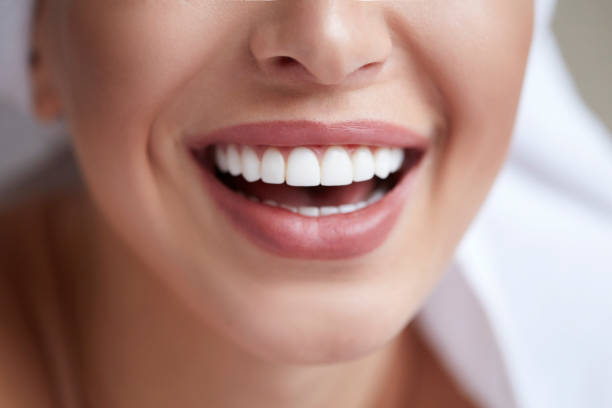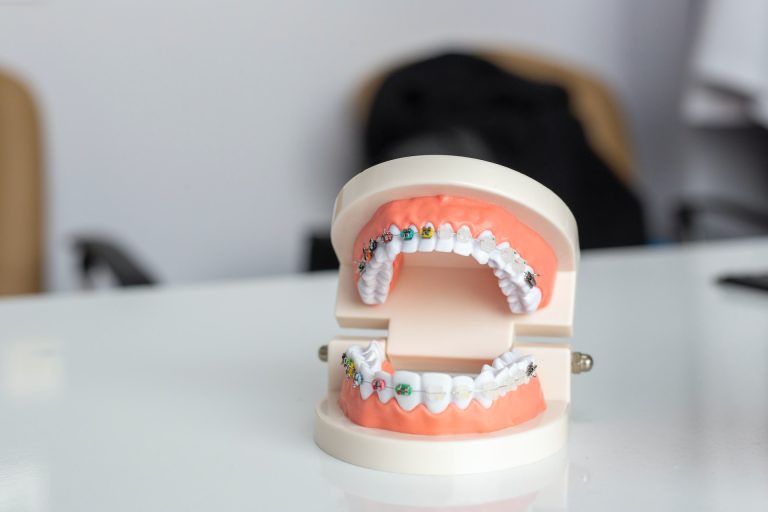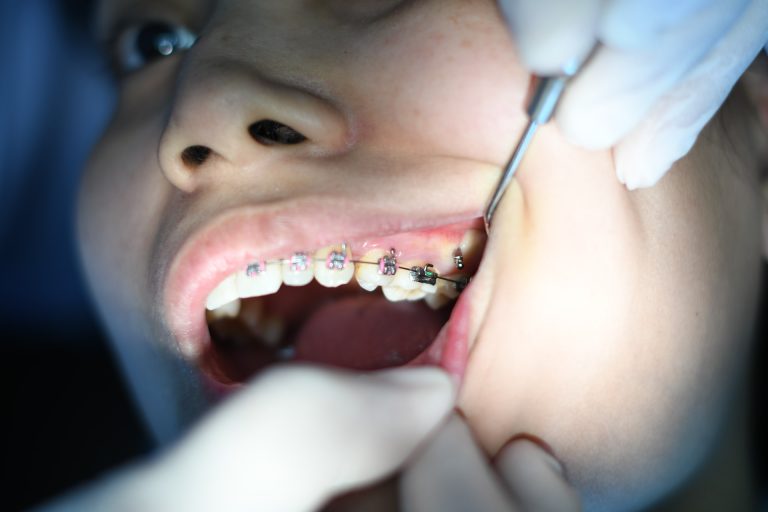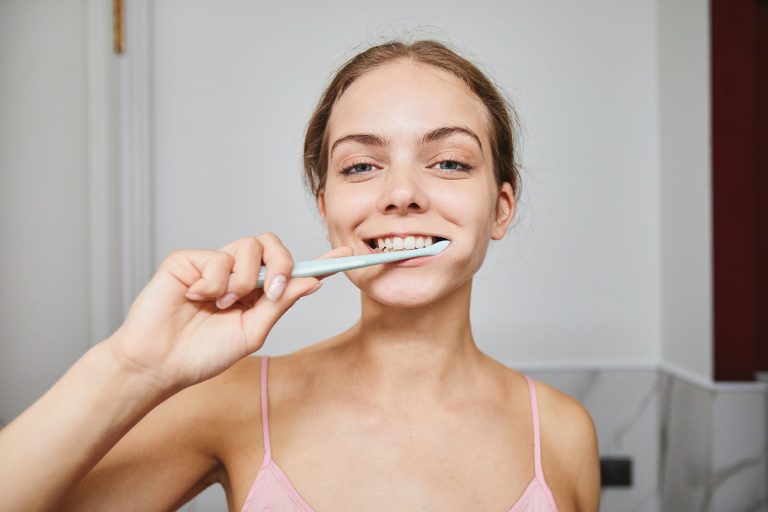Braces: widely used for teeth-straightening, but can they widen the jaw? This article investigates the impact of braces on jaw width.
Braces work by applying pressure to teeth, shifting them into alignment. However, this doesn’t affect jaw width.
Though there may be a slight increase in arch width caused by repositioning teeth, it’s minimal and temporary. Orthodontic treatment with braces is mainly about achieving a harmonious bite and balanced smile, not altering jaw structure.
Pro Tip: Talk to an orthodontist if you are worried about jaw width. They can give personalized advice for your specific situation.
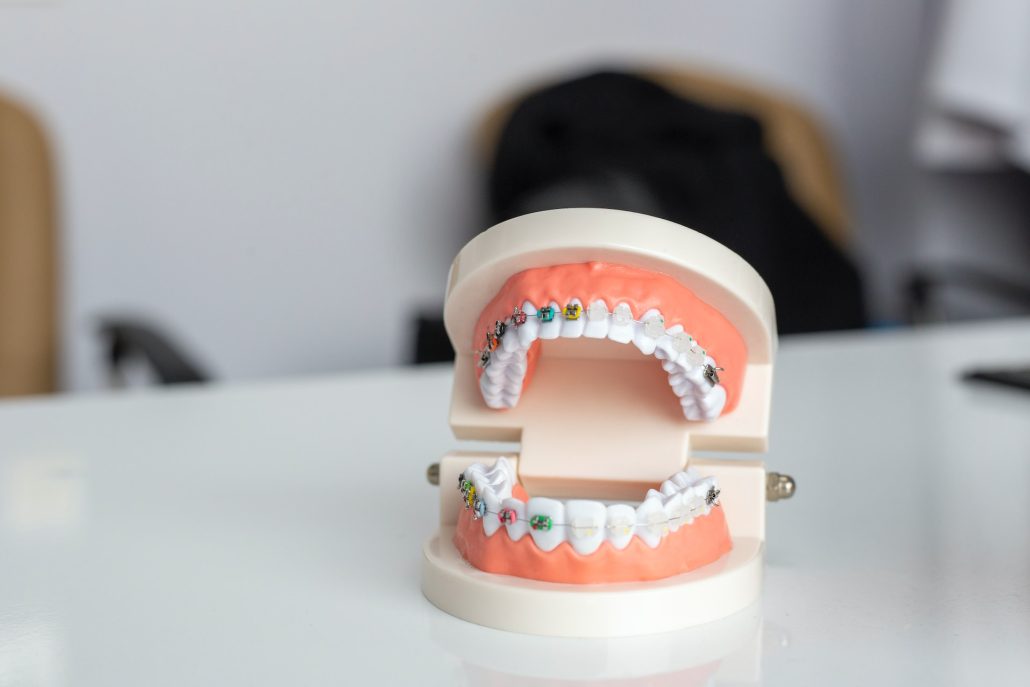
What are braces?
To understand ‘What are braces?’, delve into the explanation of how braces work. Explore in detail the mechanics behind braces and the different components involved.
Explanation of how braces work
Braces, or orthodontic braces, are used to fix crooked teeth. They use brackets, wires, and elastic bands to gently shift teeth into the right spot.
The brackets are glued to the front of each tooth. Wires go through the brackets and put pressure on the teeth. This guides the teeth into alignment.
Elastic bands can be used to help with tooth movement or jaw alignment. They are put around the brackets to add extra pressure.
It takes many months or even years for the braces to work. You will need to visit the orthodontist for checkups and adjustments.
Pro Tip: When wearing braces, take good care of your teeth. Brush, floss, and don’t eat sticky or hard foods.
Do braces widen your jaw?
To understand if braces widen your jaw, let’s delve into the misconception surrounding this idea and the actual effect that braces have on the jaw. We’ll explore both aspects in this section, highlighting the misconceptions and the real outcomes of using braces.
The misconception of braces widening the jaw
Some think braces widen the jaw. But this is not true. Braces help straighten teeth, not to change the jaw structure.
Pressure is applied to teeth by braces; this helps them move into their correct positions over time. This is what gives the illusion of a wider jaw, as it makes the face look more balanced. But it does not actually make the jaw bone wider.
Everyone’s jaw structure is different. Some may naturally have a wider jawline. Braces can make it appear wider by changing the position of the teeth and making them more aligned.
Take Emma for example. She had braces for two years. At first, she thought braces would make her jaw wider. But over the course of the treatment, her teeth got straighter and more aligned. This made her face look more symmetrical, even though her jaw did not really widen.
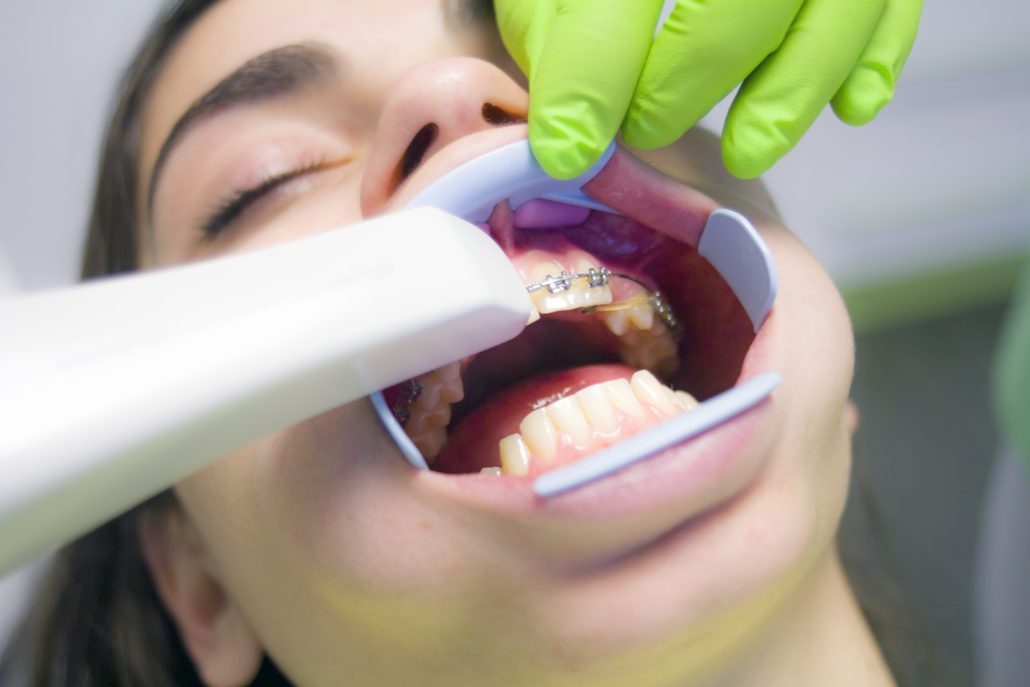
The actual effect of braces on the jaw
Braces are popular for their teeth-straightening powers, but what about the jaw? Let’s explore the actual effects of braces on this important facial feature.
A closer look at the changes braces bring helps us better understand their effect on the jaw. Here’s a table with the facts:
| Effect | Description |
|---|---|
| Alignment | Braces gradually straighten teeth, which affects the jaw |
| Expansion | In some cases, braces may widen the jaw to improve alignment |
| Correcting bite | By correcting bite issues, braces can also affect the jaw |
Besides these known effects, there are other interesting aspects. For example, braces may help with TMJ disorders by improving jaw alignment and reducing strain. Furthermore, they may contribute to improved facial aesthetics by enhancing symmetry and balance.
Looking back in time, we can see that orthodontic practices have changed a lot. In the past, people would use crude methods like animal intestines or metal bands to attempt to straighten teeth. Nowadays, we use more sophisticated tools like braces to get desired results.
Can braces change the shape of your face?
To improve facial aesthetics and achieve desired changes, explore how braces can reshape your face. Discover how braces enhance facial harmony and consider the factors to achieve the changes you desire. From improving your smile to enhancing your overall appearance, braces offer a comprehensive solution for transforming your facial structure.
How braces can improve facial aesthetics
Braces are not just for teeth-straightening. They can also transform your facial appearance! Here are four reasons why:
- Improved symmetry. Braces can correct misalignments that can cause asymmetry. By aligning teeth and jaws, they create a balanced look.
- Enhanced profile. Braces can project your upper and lower jaws to give you a prominent and defined look. This can enhance features like your chin, cheekbones, and lips.
- Balanced proportions. Crooked or crowded teeth can disrupt the face’s proportions. Braces can realign teeth to create better alignment and balance.
- Support for soft tissues. Braces provide support for the lips and cheeks. This prevents issues like sunken cheeks or protruding lips, so you have an improved overall facial aesthetic.
Catherine, Duchess of Cambridge, is an example of how braces improve facial aesthetics. Before her royal wedding in 2011, she used braces to perfect her smile and create optimal facial harmony.
Braces do more than just straighten teeth. They can reshape and enhance the face. Through improved symmetry, enhanced profiles, balanced proportions, and support for soft tissues, braces have proven themselves as powerful tools in achieving optimal facial aesthetics.
Factors to consider in achieving desired changes
Achieving desired changes in facial shape with braces requires several factors. These include: the severity of your orthodontic issues, the type of braces you select, and the treatment duration. Let’s look at each factor!
Column 1: Severity of Orthodontic Issues
- Misalignment: Crooked or crowded teeth need more realignment than minor spacing problems.
- Bite Problems: Overbites, underbites, and crossbites can affect both dental health and facial structure.
Column 2: Type of Braces
- Traditional Braces: Metal brackets and wires are effective for various orthodontic issues.
- Clear Aligners: Transparent trays offer a discreet option, but may not work for complex cases.
Column 3: Duration of Treatment
- Individual Variation: Treatment length depends on case complexity and patient cooperation.
- Patience is Key: Achieving desired changes takes time. This helps manage expectations.
These are essential factors to consider. However, age, bone structure, and oral health can all influence outcomes. Now let’s discuss some suggestions for achieving desired changes!
- Follow Orthodontist Recommendations:
- Maintain good oral hygiene and go to regular appointments.
- Wear rubber bands or headgear as instructed to correct bite-related concerns.
- Adopt Healthy Habits:
- Eat a balanced diet for optimal dental health and proper development.
- Avoid habits like nail-biting or biting pens, which can put pressure on braces.
- Maintain Retainers Properly:
- Once the braces are off, wear retainers as directed to maintain achieved changes in facial shape.
- Clean and store retainers properly to prevent bacterial buildup and dental problems.
By following these suggestions, you can maximize the effectiveness of your braces treatment. Remember, patience and consistency are key to achieving desired changes in facial structure.
Conclusion
Braces and jaw width have been a debated topic among dental pros. Some think it can widen the jaw, while others say it’s natural growth.
Research suggests that braces might make a difference. Orthodontic treatment with braces puts pressure on teeth, which stimulates bone remodeling in the jaw. This process may cause slight changes in jaw width over time.
It’s important to note that any widening due to braces is usually small and happens gradually. Orthodontists monitor the process to make sure the results are good without ruining facial harmony.
Pro Tip: If you have worries about your jaw width or teeth alignment, speak with a qualified orthodontist. They can offer personalized advice and solutions for your needs.
Frequently Asked Questions
Frequently Asked Questions about “Do braces widen your jaw?”
1. Can braces actually widen your jaw?
Yes, braces can help widen your jaw. In some cases, braces are used to bring the upper and lower jaws to the correct position, resulting in a wider jaw.
2. How do braces widen the jaw?
Braces widen the jaw by applying continuous pressure on the teeth and bones. Over time, this pressure encourages the growth and expansion of the jaw, resulting in a wider dental arch and improved facial appearance.
3. Are braces the only way to widen the jaw?
No, braces are not the only way to widen the jaw. Other orthodontic appliances, such as expanders or orthognathic surgery, may also be used depending on the specific needs of the patient.
4. Are there any age limitations for jaw widening with braces?
No, there are no age limitations for jaw widening with braces. While it is more common to undergo orthodontic treatments during adolescence, adults can also benefit from braces to widen their jaw.
5. How long does it take for braces to widen the jaw?
The duration of jaw widening with braces can vary depending on various factors, including the severity of the misalignment and the individual’s response to treatment. On average, it may take several months to a few years to achieve the desired results.
6. Are there any risks or side effects associated with jaw widening through braces?
While braces are generally safe, some individuals may experience mild discomfort, soreness, or temporary changes in speech during the initial adjustment phase. It is important to consult with an orthodontist to discuss any potential risks or side effects associated with jaw widening through braces.

